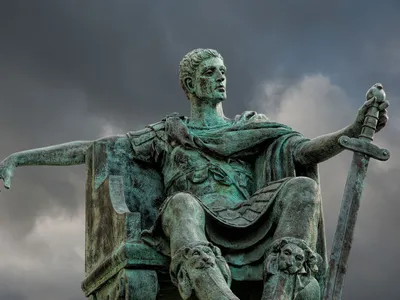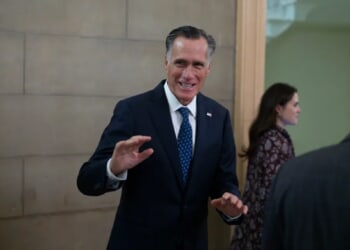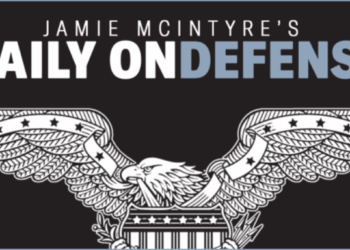
Order Michael Finch’s new book, A Time to Stand: HERE. Prof. Jason Hill calls it “an aesthetic and political tour de force.”
Sign up to attend Michael’s talk in Los Angeles on Thursday, November 20: HERE.
The Biden regime tried to convince Americans that enormous debt and skyrocketing inflation, as well as a nonexistent Southern border and a host of other woes, were just inevitable byproducts of life in America today. Patriots know that isn’t true and was never true, but government spending is still far out of control, and inflation continues, albeit as a lower rate. People who lived long before us, however, knew how to rein all this in: fix the value of money.
Ronald Reagan said it: “Inflation is a tax. In fact, inflation is the cruelest of taxes because poor people tend to pay it.” It melts away life savings; makes it difficult, or downright impossible, to plan for the future; and increases societal instability as it destroys jobs and livelihoods. Yet historically, there have been numerous societies that suffered no inflation at all. Why can’t the United States be one?
The foremost historical example of monetary stability is known today as the Byzantine, or Eastern Roman Empire, although the people who actually lived in it thought they were simply Romans living in the Roman Empire, and called themselves “Romans” only. As Empire of God: How the Byzantines Saved Civilization explains, the fourth-century Emperor Constantine ended a long period of inflation in the empire by stopping the debasing of Roman coinage and stabilizing the money supply that the inflation and scarcity definitively came to an end. In the year 312 AD, he introduced the solidus, a gold coin that was meant to be as economically solid as its name implied. Each one weighed the same: twenty-four carats (189 milligrams), or about four and a half grams of gold per coin.
Constantine’s solidus became the cornerstone of the Roman economy. It was remarkably stable; in fact, it was one of the most stable currencies in the entire history of the world, and was one of the key reasons why the empire was able to continue for so very long (if the U.S. lasted as long as the Byzantine Empire, Old Glory would wave until the year 2899). The solidus, or nomisma, retained exactly the same weight and value for over seven hundred years, until the reign of Emperor Michael IV the Paphlagonian (1034–41), who revived the ancient practice of devaluing the currency in order to meet short-term economic goals. It was so stable for those seven centuries that it became an accepted currency even beyond the bounds of the empire itself. The nomisma was often preferred even to the local currencies, which were all too often even more debased in value.
Stability on this order is scarcely imaginable in these days of fiat currency, that is, economic systems in which the currency has no value of its own, unlike gold or silver, other than what the government decrees that it is worth. Fiat currency aids and abets the practice of printing more currency in order to feed an ever more bloated and all-encompassing government. In 1800, a dictionary cost fifty cents, while a twelve-volume encyclopedia cost twenty dollars. A man could buy a cow for ten dollars. A pound of coffee could be had for a quarter. All this seems quaint and remote to us now. The encyclopedia set alone would cost hundreds of dollars and a cow several thousand. As of this writing, coffee costs eight or nine dollars a pound for the cheap stuff, but that could change significantly by next week.
Imagine, however, if a dollar in 2025 were worth exactly what it was worth in 1800 and exactly what it had been worth ever since 1325. A currency that was that stable would constitute an immediate and powerful curb on an irresponsible and reckless government indulging in the out-of-control printing of paper money in order to cover its ever-larger expenditures. A stable currency not only makes for a strong economy, but for a responsible government that doesn’t risk buying what it can’t pay for or promising the world to gullible voters only to make them pay for all the politicians’ “free” schemes (think Zohran Mamdani) both through higher taxes and the hidden tax of inflation.
American economists and policymakers would do well to learn about the Byzantine nomisma and ponder the stability it brought to the Roman economic system. To do that, however, they would have to follow President Trump’s example and have the best interests of the American people as their highest priority.















